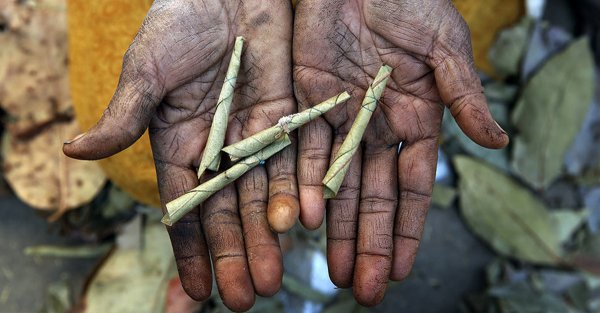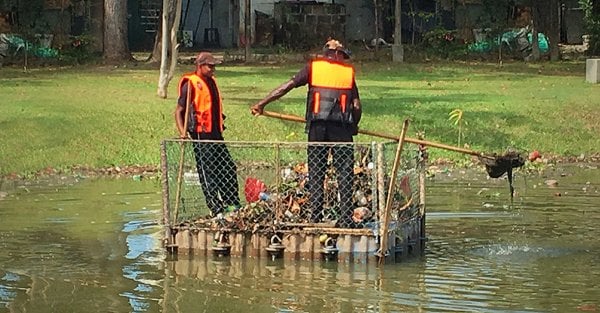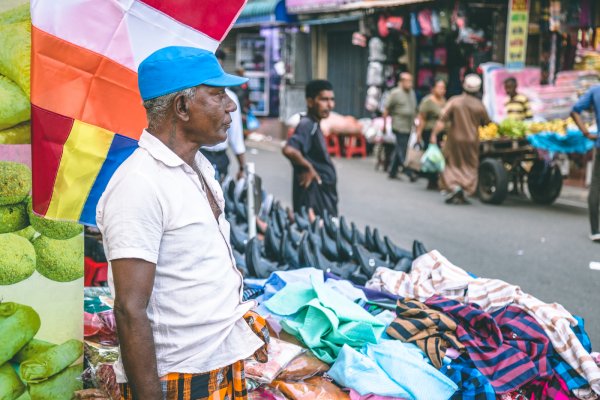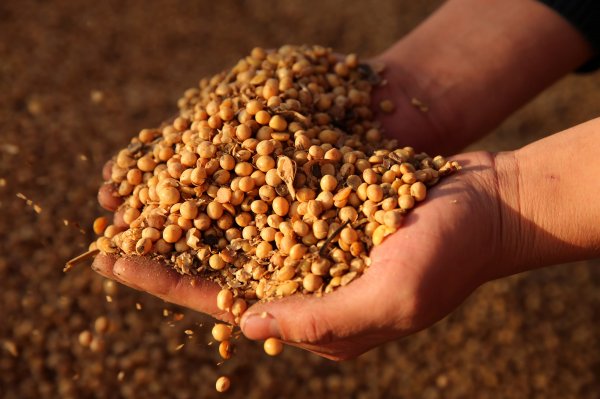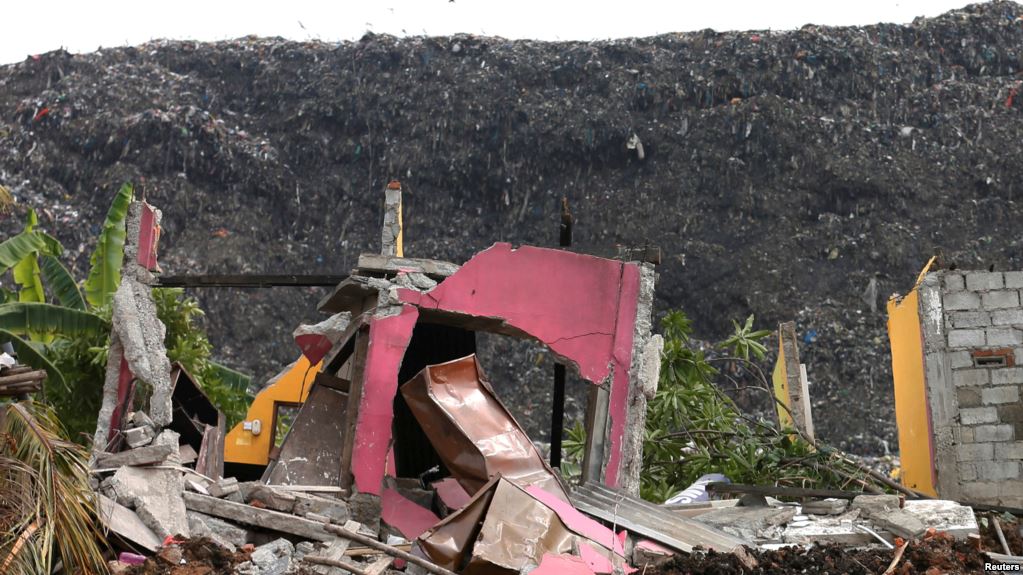
On 14 April, 2017, while people across the island were preparing to celebrate the Sinhala and Tamil New Year, tragedy struck Colombo. The Meethotamulla garbage dump, on the outskirts of the city, collapsed, killing more than 30 and affecting as many as 1,800 people.
Upon collapse, the garbage dump was almost 50 feet high and covered a whopping 21 acres of land.
Why It Happened
Until the 1970s, the general area of the present garbage dump was a paddy field called Pothuvila. It was administered by the local Agrarian Services Centre and provided rice for the villagers living in the Kolonnawa area. By 1977, this paddy field was abandoned. The Kolonnawa Urban Council (KUC) decided to use this land to dump the waste collected within its jurisdiction.
The situation only worsened in the year 2009 after the Colombo Municipal Council (CMC) was no longer allowed to dump waste at the Bloemendhal garbage dump. The CMC turned to the Kolonnawa area—specifically the Meethotamulla garbage dump—as a solution to the city’s waste management problem.
Within a span of eight years, the amount of waste at the Meethotamulla garbage dump exponentially increased, growing in size until it towered above the rooftops of the settlements in the area and collapsed in a landslide of waste and toxic gas.
What Happened Afterwards
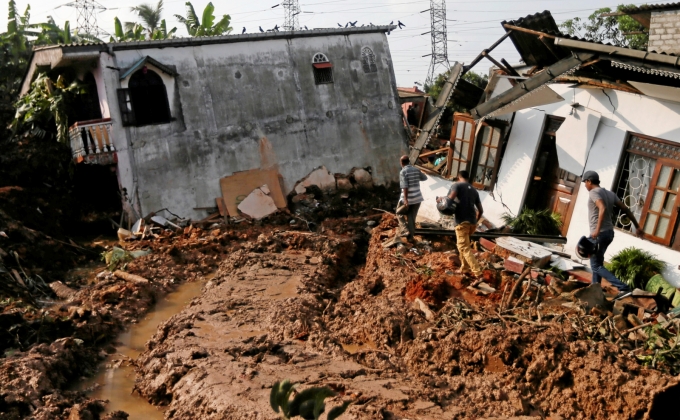
The collapse of the Meethotamulla garbage mountain on 14 April, 2017, made local and international headlines for days afterwards. Image courtesy ibtimes.co.uk
Waste management in Sri Lanka is the responsibility of several state institutions, the local authorities of the cities and towns. Since the Kolonnawa area is a part of the Colombo district, the Ministry of Megapolis and Western Province Development, the Colombo Municipal Council and the Urban Development Authority (UDA) are some of the institutions which were involved in resolving the crisis.
According to J. M. U. Indrarathna, Deputy Director General of Waste Management of the Central Environmental Authority (CEA), following the collapse of the Meethotamulla garbage dump, the area was taken over by the Ministry of Megapolis and Western Province Development. “The Ministry called for three different initiatives to resolve this situation,” Indrarathna told Roar Media. “The first initiative took place immediately. Within a period of six months, measures were taken to stabilise the collapsed waste dump, and make sure that no further damage occured,” he added.
Under the authority of the Ministry, these measures were undertaken by the National Building Research Organisation (NBRO), the Disaster Management Institute, the Sri Lanka Land Reclamation & Development Corporation (SLRDC) and the University of Moratuwa, as well as a few other institutions.
According to Jagath Munasinghe, Chairman of the UDA, ninety six units from two housing schemes in Kolonnawa and Halmulla were allocated for affected families. While a few families agreed to move into these units, others decided to stay behind in their old premises.
The final initiative brought in to resolve the crisis was more long term, and is currently being undertaken by the Ministry of Megapolis and Western Province Development and the UDA. Munasinghe told Roar Media that this long term initiative mainly revolved around what was to be done to this area. One prospective idea put forward by the University of Moratuwa and the NBRO was to allocate fifteen acres of the dump site for an urban park, while the rest of the area could be used for the construction of houses.
“Right now this project is still in its planning stage. The University of Moratuwa and the NBRO will conduct the preliminary studies for their proposed idea this year, and after their plans have been finalised we will encourage developers to partake in this project,” Munasinghe said.
Colombo’s Waste Management Crisis: What The State Has Done So Far

For several weeks after the Colombo Municipality stopped disposing waste at Meethotamulla, streets in certain areas of Colombo were filled with garbage. Image courtesy lankainformation.lk
As the Meethotamulla incident took place due to an inefficient collection and disposal process, over past year the state brought in stricter legal measures and came up with a more systematic process of waste collection and disposal.
For one, residents were asked to separate their household waste into non-degradable and degradable waste, and the collection of garbage has been conducted on two seperate days of the week for both non-degradable and degradable household waste. Nalin Mannapperuma, Director of the Western Province Waste Management Authority, told Roar Media that most of the degradable waste collected from Colombo is taken to a large composting plant which is located in the Kerawalapitiya area, north of the city. The composting machine in the plant has the capability of converting 50 tonnes of degradable waste into compost every day, and was commissioned by SLRDC, together with the National Solid Waste Management Support Centre (NSWMSC)—which comes under the purview of the Ministry of Local Government and Provincial Councils. According to the NSWMSC, both state institutions are currently in the process of getting these large-scale composting machines from Japan for the other eight provinces of the country.
The National Solid Waste Management Support Centre (NSWMSC) also told Roar Media that it maintains a waste management hotline and encourages citizens to inform the centre if there are any issues or inconsistencies in the collection of their household waste.
Segregation Of Household Waste—Why Is It Important?
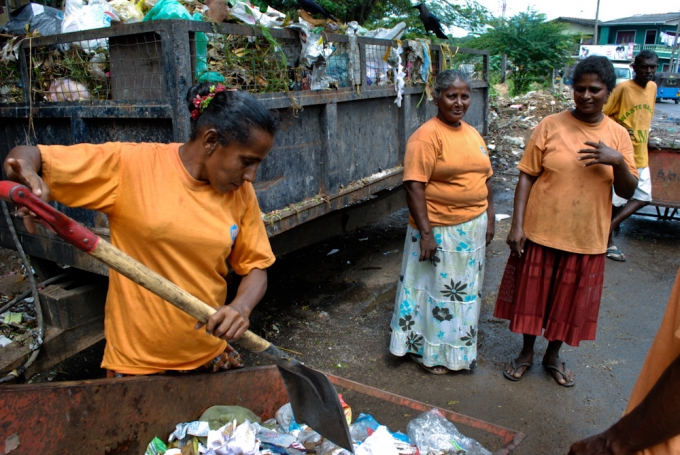
Citizens were advised to segregate their household waste into degradable waste and non-degradable waste, which was collected on two seperate days of the week. However, certain suburbs outside of the city still do not follow this process of collecting waste. Image courtesy flickr.com
Speaking to Roar Media, Jayavilal Fernando, Project Manager of the Solid Waste Management Project at the Ministry of Megapolis and Western Province Development, said that the UDA, like the NSWMSC, is also conducting another project where non-degradable household waste is being collected for recycling. This project is currently being carried out at the UDA office, at three schools, and at a few apartment complexes in Colombo.
The idea behind this project is to encourage more people to give in segregated household waste for cash returns.
“Based on the type of waste and the amount of waste that [people] hand over, they will be awarded points,” said Fernando. “For instance, if [someone] receives a thousand points for the waste that they have given to the recycling collection centres located in these places, they will receive Rs. 1000,” he added.
Fernando mentioned that if this project proves to be a success, it will be introduced to other institutions as well.
Waste Incinerators And Sanitary Land Filling
Fernando also told Roar Media that the Ministry is in the process of constructing three waste-to-energy incineration plants in the Kerawalapitiya area. These plants will have the capability of incinerating up to 500 metric tonnes of waste each day.
The Ministry has also made plans for sanitary landfilling in areas like Aruwakkalu, Puttalam. Currently, the process of ground preparation is taking place here, meaning that it will be sealed with impermeable synthetic bottom liners to prevent pollution of groundwater and other environmental problems.
By October of this year, the ministry hopes to take non-degradable waste from Colombo to use for this project.
According to Fernando, an average of 1200 metric tonnes of non-degradable waste will go into this sanitary landfilling project each day for one year. The Ministry hopes to conclude the landfilling by October 2019.
While the state has brought in measures to ensure that the collection and disposal of waste happen smoothly, instances of waste being dumped on the sides of streets in urban and suburban residential areas still take place.
Waste was also disposed in some parts of the marshlands outside adjoining the city—Muthurajawela being one such area. In March this year, the President declared the area a wildlife and environmental conservation zone, stating that legal action will be taken against any parties that responsible for illegal landfilling, waste disposal, and construction in this area.
“The Ministry [of Megapolis and Western Province Development] is doing all that they can to resolve the waste management issue [in Colombo],” environmental lawyer Jagath Gunawardana told Roar Media. “But it is not their responsibility, entirely. The mandate for waste management of each area lies with the local authority of that specific area, and they need to be held responsible,” he stated.
Adding to this, the former Director General of the Department of the Wildlife, Dr. Sumith Pilapitiya, too, said that the local authorities need to be more responsible for efficient waste collection in their respective areas. He told Roar Media that if this doesn’t happen, then the landfill in Aruwakkalu, the compost plants, and waste-to-energy incinerators will not receive the targeted amount of waste they need, and the state will, therefore, incur a loss when transporting an insufficient amount of waste from Colombo to Aruwakkalu and Kerawalapitiya.
“The measures that the government has currently taken in regard to waste management in Colombo and its suburbs, and the initiatives that will be taken in future, [like] the incineration plants and the [sanitary] landfilling in Aruwakkalu, may not be the best options to be taken, but they are the only options that the state has right now,” Dr. Pilapitiya revealed.
Of course, waste management is a complex issue, one which, according to Mannapperuma and Dr. Pilapitiya, has affected our city for a few decades. But it is high time that the state institutions responsible for waste management in our country, the local authorities and the citizens of the Colombo and its suburbs came together to bring an end to the problem before another crisis takes place.
Featured image: Rescue missions which were conducted after the landslide at the Meethotamulla garbage dump. Image courtesy voanews.com

